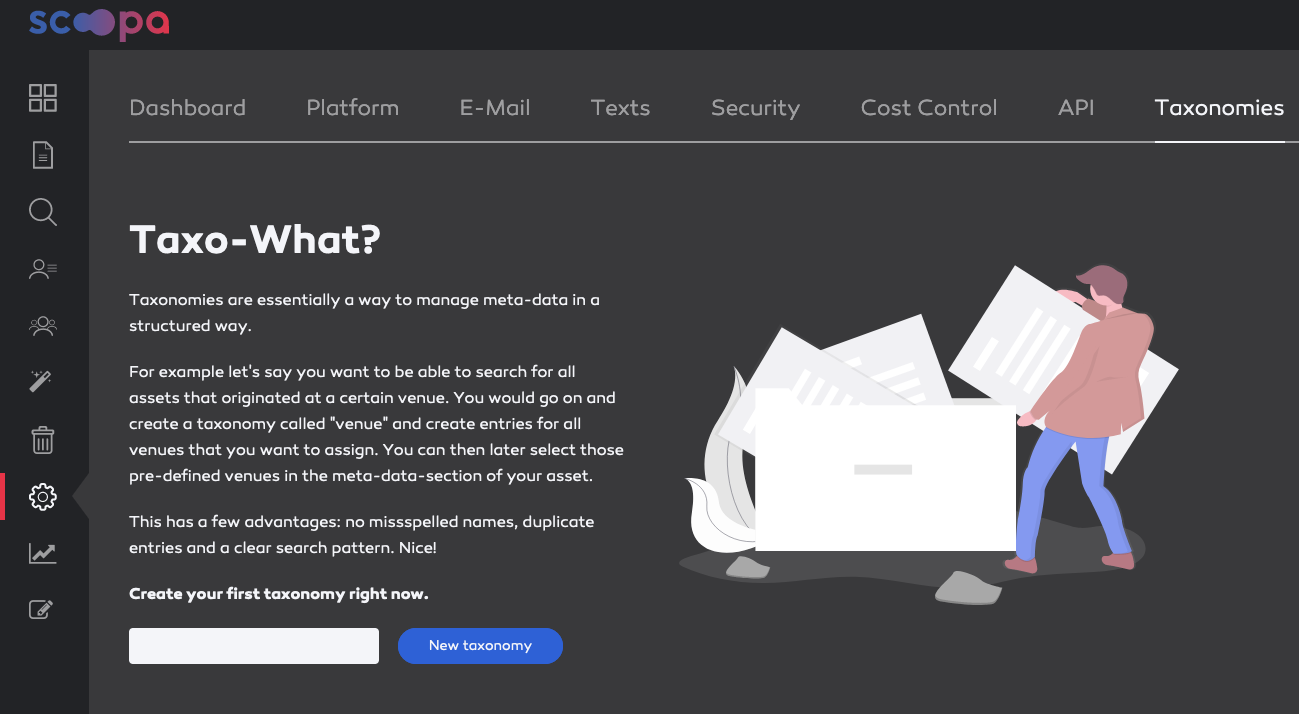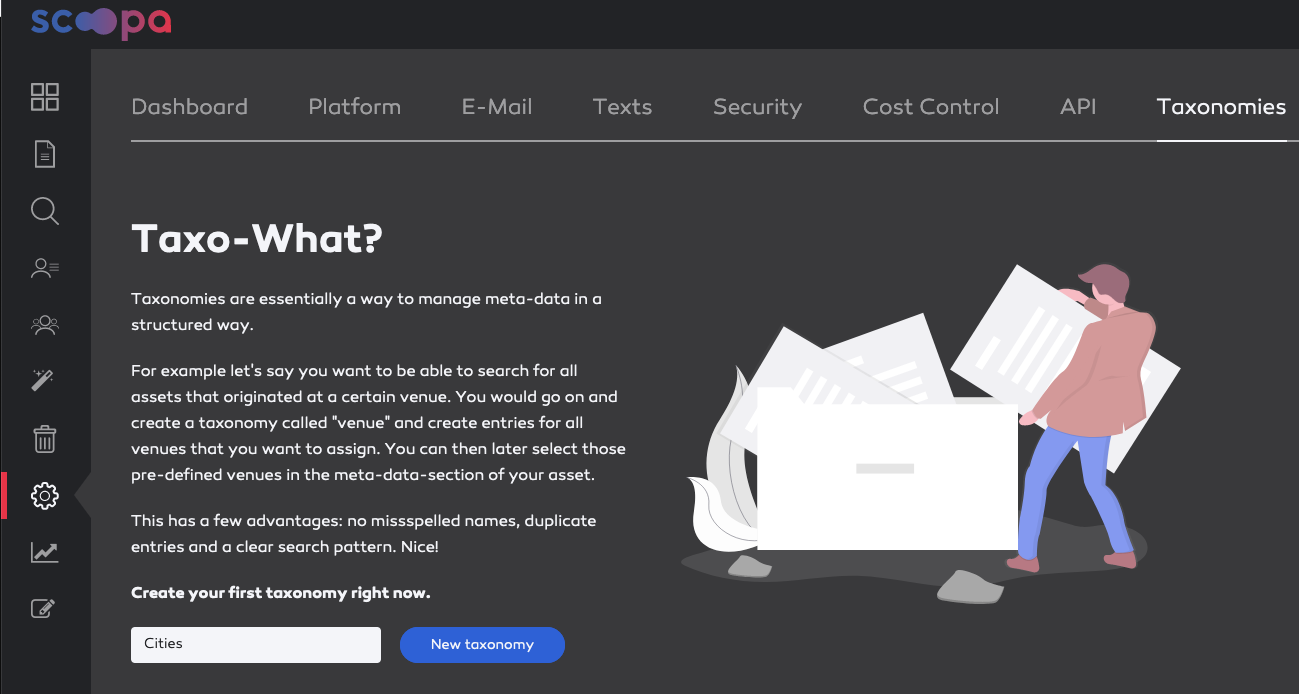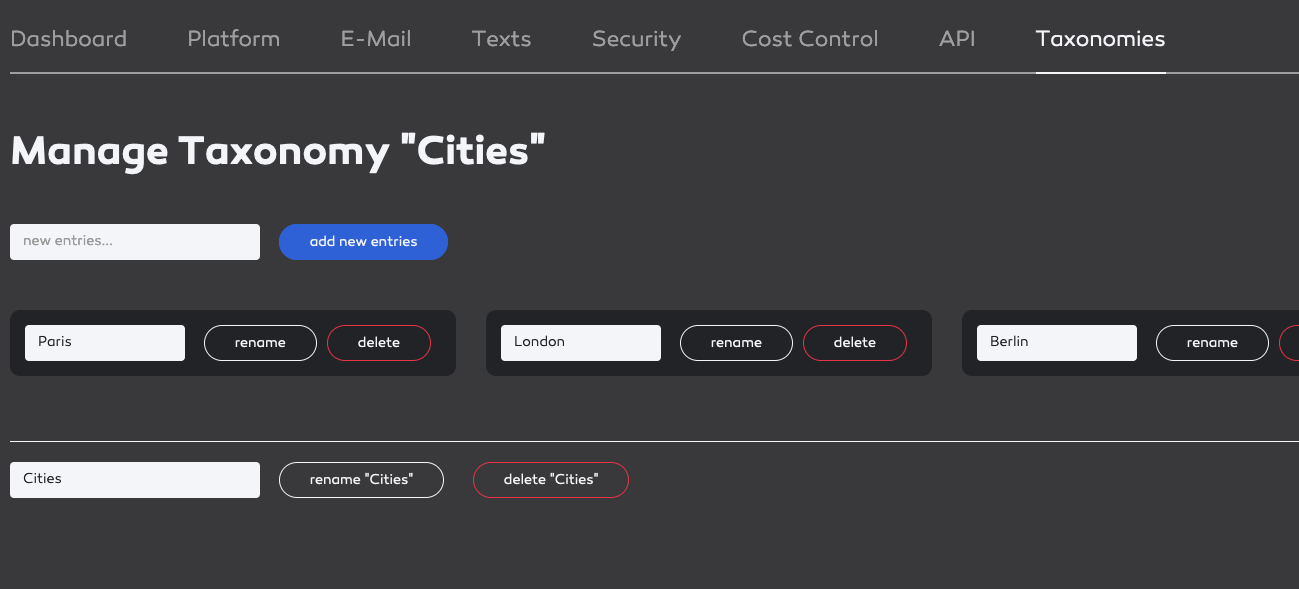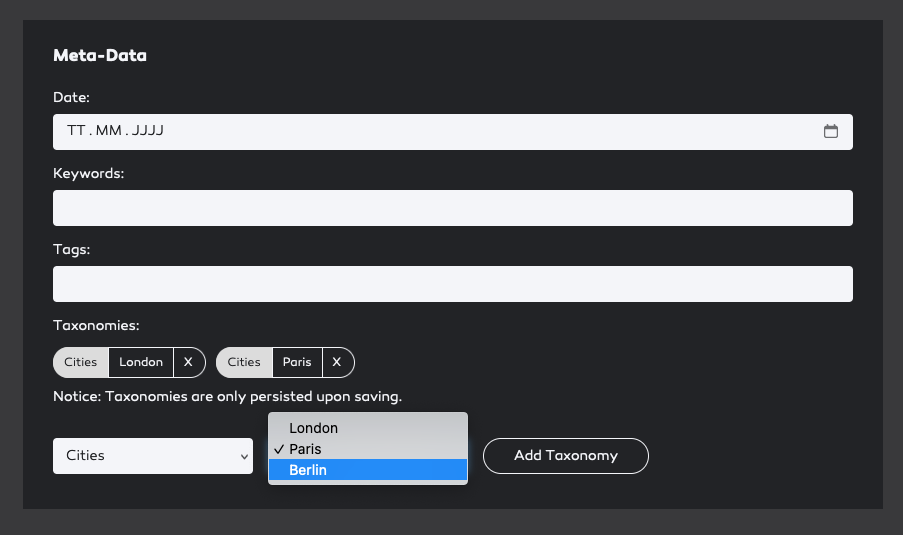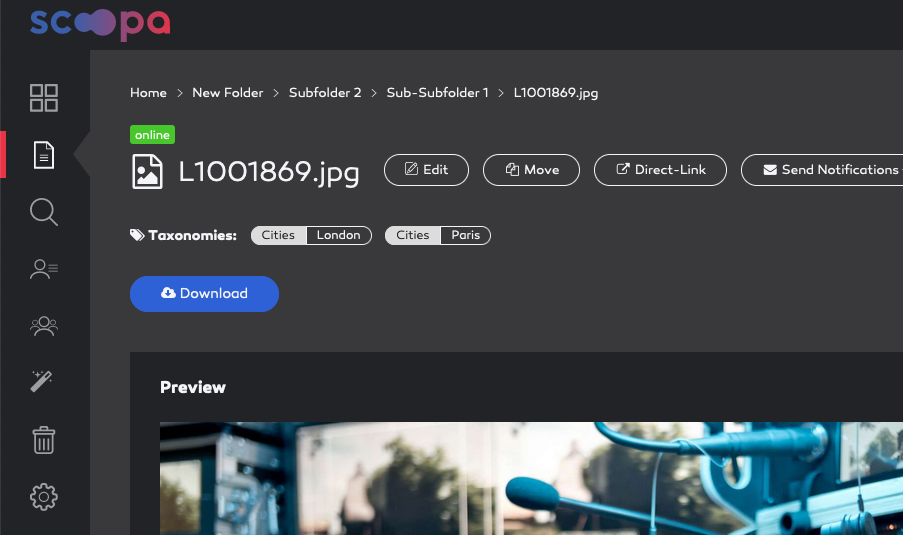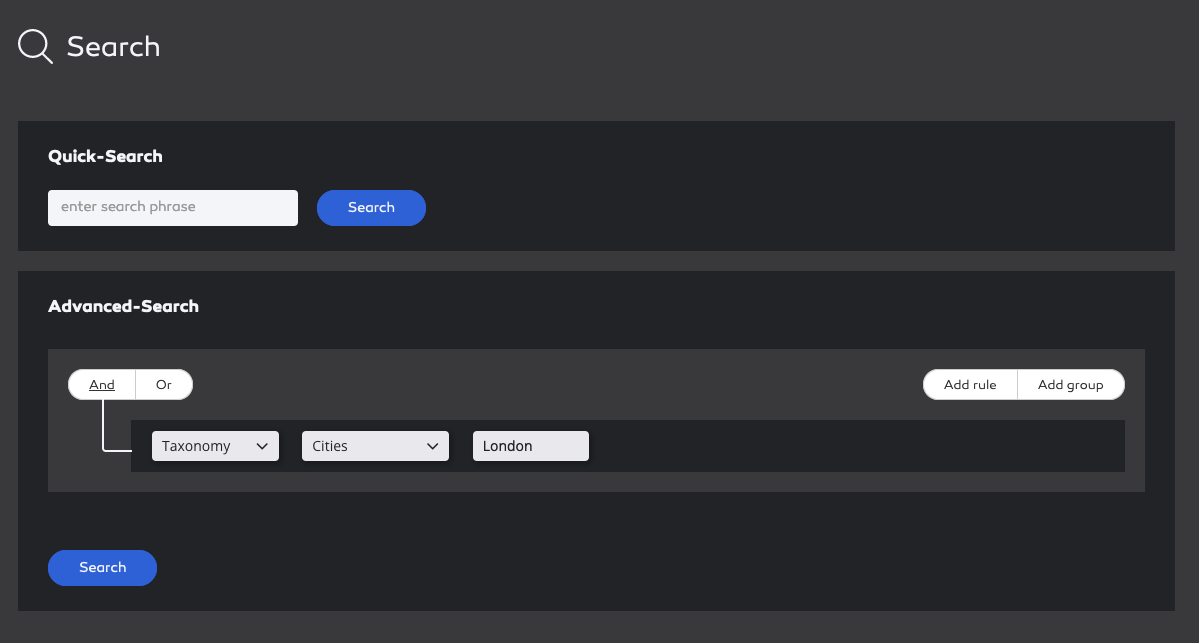Understanding taxonomies
Taxonomies in scoopa are used to organize and categorize content. A taxonomy is a hierarchical system of classification that is used to group similar items together. In scoopa, taxonomies are used to create a structured organization of content that makes it easier to find and manage.
All taxonomies used in scoopa are hierarchical. That means every taxonomy has multiple terms. Each term is a child of its taxonomy. An example of a taxonomy could be a list of cities: the taxonomy would be "Cities" and a term would be "London".
Taxonomies are important for content management, because they allow content to be easily categorized and retrieved. By using taxonomies, we can ensure that tags and keywords are always spelled correctly. Another benefit is that the user does not have to create them on-the-fly leaving you with often chaotic results like "London", "City of London", "London - Nottingham" etc..
The downside of using taxonomies is that you need to prefill the terms before they can be used.
